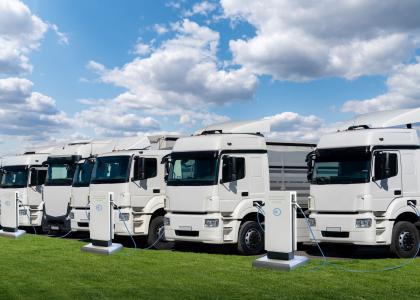Advanced Building Energy Codes:
The 2007 House energy bill contained a provision calling for DOE and states to update energy codes for new buildings. This provision directed DOE to support efforts by model code organizations to update building codes to reduce energy use of new buildings by at least 30% by 2010, and 50% by 2020. The 30% target is based on a goal set by the American Society of Heating Refrigerating and Air-Conditioning Engineers (ASHRAE) for the pending 2010 update of their model commercial building code. The 50% goal is a qualification level for energy efficiency tax credits adopted by Congress in 2005. As new codes are finalized, states were directed to either adopt these model codes or their own state-specific equivalents. Funding and technical assistance to states was authorized. In order to meet long-term energy goals, it is important that new buildings be as energy-efficient as is economically justified, since it will be much more expensive to retrofit these buildings after they are completed. This provision should be adopted in 2009.
Appliance and Equipment Standards:
Federal minimum efficiency standards have been set by Congress on more than 40 products. New legislation should add a few additional products, based on negotiations now underway with industry to develop consensus recommendations on several products. New legislation should also clarify aspects of the process by which DOE periodically revises these standards including: clarifying DOE's authority to set multiple performance standards for a product (this was in the House and Senate 2007 energy bills, but dropped from the final bill); directing DOE to consider the impact of carbon emissions and the impact of the energy savings on energy prices when setting standards; strengthening the "rebuttable presumption test" for setting standards when efficiency savings are highly cost-effective, and setting standards on "BR" reflector lamps, a major loophole in current DOE standards.
Energy-Saving Home Retrofits:
Congress should expand EPA's Home Performance with Energy Star program to stretch nationwide (it currently operates in only 22 states) and should encourage much greater participation in the program by establishing rebates for homes that undertake comprehensive energy efficiency retrofits. The rebate would be performance based, rewarding higher levels of energy efficiency improvement with higher rebates under a good (10% savings), better (20% savings) and best (30% savings or more) model. The rebates would be administered by states. Funding for the rebates could initially come out of stimulus funds being given to states and cities, with longer-term funding provided under climate legislation. The expanded program should include support for the training of contractors and home energy raters who would help implement the program.
Building Labeling/Disclosure:
Draft climate change legislation prepared by Representatives Dingell and Boucher includes a provision to expand the Energy Star building labeling program to include homes and additional types of commercial buildings. These labels let building owners, prospective purchasers, and prospective tenants know how the energy performance of a building compared to other similar buildings in the area. The intent is to motive building owners to upgrade their buildings, and to help prospective purchasers and tenants select efficient buildings. Programs along these lines are now being started in Europe and in several U.S. states. The program should include provisions for DOE and EPA to work with states, counties and local governments to implement programs that encourage or require building owners to have publicly accessible certificates showing the individual building's performance relative to similar buildings, the building's energy efficiency potential, and the location and type of transit services within walking distance of the building.
Multifamily and Manufactured Housing:
Congress should establish a new program at DOE to offer competitive grants for innovative projects to improve the efficiency of multifamily and manufactured housing. Saving energy is more difficult in multi-family and manufactured housing and such housing is disproportionately used by low- and moderate-income families. There are some successful local programs, but the number of programs in operation is few and far between. For example, creative programs could be developed to encourage retirement of old manufactured homes, to invest in efficiency upgrades for new or existing publicly assisted housing, or to institute multifamily building heating system retrofits. Given the limited experience to date, we recommend that now is the time to encourage of variety of innovative approaches, to evaluate these approaches, and based on these evaluations to then develop broader programs. We suggest a funding authorization of about $50 million in the first year, rising to about $500 million in year 5.
Commercial Building Efficiency Retrofits:
Congress should establish a program that would encourage the near term launch of large scale, deep retrofitting of private and publicly owned commercial buildings or portfolios of buildings. The program would provide an incentive to building owners for efficiency improvements based on demonstrated energy savings of no less than 20% with incentives calibrated to encourage 30% savings or greater. The Energy Star Building benchmarking program would be used to document and verify performance and the incentive would take the form of a rebate per square foot. A loan guarantee, proportional to the targeted energy savings level, would be established to enable upfront investment in energy efficiency projects. Partial payment of the incentive would be granted upon completion of the efficiency project and with the remainder of the incentive conditioned on verification of actual performance over a three year period. This proposal was initially developed by the Real Estate Roundtable and NRDC. This would be another program for which initial incentives might come out of stimulus funds, with long-term funding incorporated into climate legislation.
Building Assessment Centers:
A new program should be established to help train building engineers and technicians, similar to the Industrial Assessment Center discussed above. Today's commercial buildings have increasingly sophisticated controls and need trained engineers and technicians to help design and operate them optimally. There is a shortage of such skilled staff today. A BAC program would help address this need, building on the successful IAC model.

